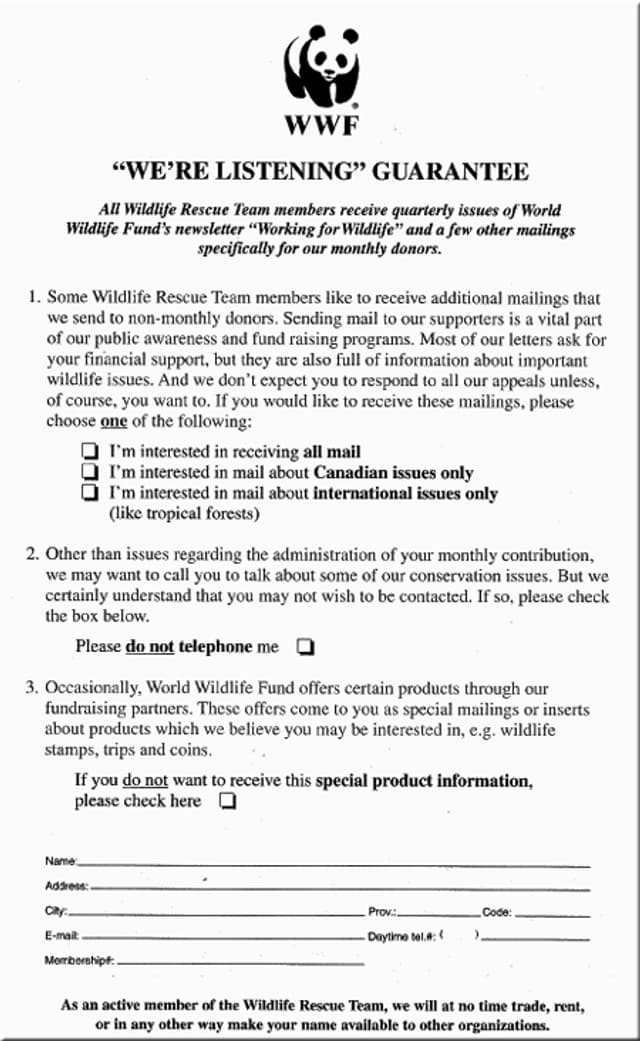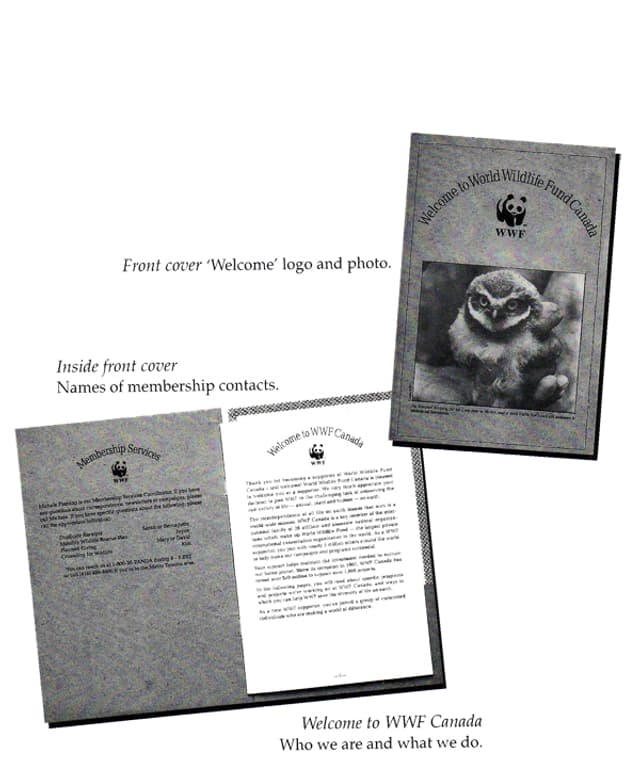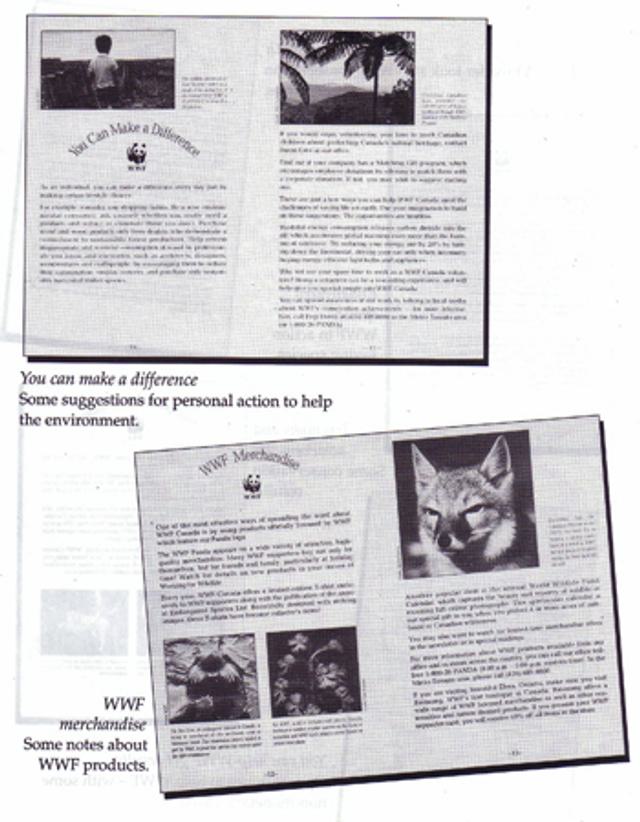WWF Canada: welcome pack for new donors
- Exhibited by
- David Love
- Added
- September 05, 2009
- Medium of Communication
- Direct mail.
- Target Audience
- Individuals.
- Type of Charity
- Environmental/animals.
- Country of Origin
- Canada.
- Date of first appearance
- 2002.
SOFII’s view
Welcome packs may be commonplace now but this was groundbreaking in its time and it's still a very good and highly copyable example of the genre. Most noteworthy perhaps is that this pack has been structured and written around what the donor would want, not what the organisation wants. In this way, WWF set about ensuring that as soon as donors first come to the charity they are immediately reassured that they have made the right decision. As we all know, first impressions last.
Creator / originator
David Love, Gwen Chapman, Ana White
Summary / objectives
The nineteen eighties were boom times for charities. Most were even making money acquiring new donors. In the early nineties, this changed. Getting new donors became very expensive.
To make things more challenging, over half of the donors we acquired did not make a second gift. At WWF Canada, we decided that expensive acquisition programmes only made sense if we kept these donors.
So WWF Canada created a 'welcome' book. Feeling that donors would give again if they thought we really cared about them, the centerpiece of the book was our 'we're listening' guarantee, opposite.
Background
Our welcome book touched on our donors' concerns. It relentlessly focused on our mission, not our organisation. It also clearly stated where we spent our donors' money. Two words obsessed us. We wanted to be seen as effective (doing the right things) and efficient (doing things right).
And at every turn, we asked ourselves: 'What would our donors think?' Ken Burnett's work on relationship fundraising guided us as we developed our book.
Finally, we did all we could to get a second transaction (not necessarily a gift) from our new donors. A change of address card, an information request form and a new member survey (see illustrations) were enticements.
Special characteristics
We shied away from being fancy. The booklet was simple and full of pictures
Influence / impact
Our welcome book's purpose was to increase the number of second gifts. This certainly happened and over the next 10 years, WWF Canada built a remarkably loyal file of donors who contributed millions to wildlife conservation.
Details
While we did not test the booklet, we know of charities that did test theirs. And they confirmed a higher renewal rate from first-time donors who received a welcome book.
Costs
The booklet cost about $1.25 per new donor, including postage. We of course put this figure into our acquisition budget.
Merits
This simple idea put relationship fundraising into practice. Welcome packs are now commonplace as acquiring new donors is even more expensive and keeping them becomes the fundraiser's greatest challenge.
 View original image
View original image
 View original image
View original image
Also in Categories
-
- Individual donors





















